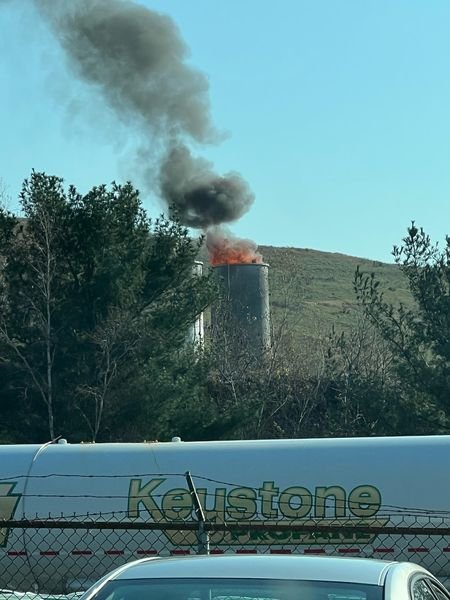Thank you Mayor Cognetti (Mayor of Scranton), Mayor Conway (Mayor Max Conway), Scranton Council and Dunmore Council for voicing your concerns with the Landfill's recent request to dump up to 200,000 gallons of leachate into our waterways.
This is a much needed example of local municipalities working together to represent, and protect, their impacted citizens. And in this case, it will only get worse unless something is done.
“This is just indicative of the broader issue, which is if you allow a landfill to grow this size, the problems and the outputs that it produces grow with it... The bigger these decisions become, the more volume that’s increased, the bigger the risks are, and that’s what we’ve been shouting from the mountaintops for years.” - Pat Clark of Friends of Lacakwanna.
Perhaps as this garbage mountain grows grows taller, Governor Tom Wolf will finally be able to hear us.
*********************************
Scranton, Dunmore officials ask governor review of landfill proposal
BY FRANK WILKES LESNEFSKY STAFF WRITER
Leaders of Scranton and Dunmore want Gov. Tom Wolf’s scrutiny as the state Department of Environmental Protection considers a request from the Keystone Sanitary Landfill to discharge treated leachate into a Lackawanna River tributary.
In a letter dated Tuesday and signed by Scranton Mayor Paige Gebhardt Cognetti, Dunmore Mayor Max Conway and every member of both Scranton city and Dunmore borough councils, officials urge Wolf to carefully review an application by the Louis and Dominick DeNaples-owned landfill in Dunmore and Throop. The letter also asks for clarity on aspects of the proposal and notes previous leachate issues at the landfill.
The landfill submitted a major permit modification application Feb. 18 seeking approval to treat leachate to a higher degree on site and discharge up to 200,000 gallons per day into Little Roaring Brook just off of East Drinker Street — enough to fill two Olympic-sized pools in just under a week. The landfill currently pretreats its leachate and pipes it to Pennsylvania American Water’s Scranton wastewater treatment plant.
The landfill initially sought to discharge treated leachate into Eddy Creek and Little Roaring Brook in December 2019 but removed Eddy Creek. Leachate is liquid that percolates through garbage piles.
The DEP is reviewing the landfill’s application, and last month the department sought input from Dunmore and Throop boroughs.
The discussions come 15 months after the DEP approved the landfill’s Phase III expansion, which gave it the capacity to add 188 billion pounds of additional garbage through 2060, tripling its total volume of waste.
“This is the latest example of the continuous burden this landfill puts on both of our municipalities and our area,” according to the joint letter. “These burdens will only grow, in both severity and frequency, due to the 2021 approval of the landfill’s Phase III expansion by the Department of Environmental Protection.”
The letter also takes aim at the DEP, asserting, “The department has a record of granting the landfill exactly what it requests.”
“With the department acting as both the decision maker for each request and the down-stream enforcer of compliance, we are fearful that this could lead to a circular process that harms our health, our environment and our economy,” the Scranton and Dunmore officials wrote.
The DEP declined to comment on the letter, spokeswoman Colleen Connolly said in an email.
“The department has not been provided a copy of the letter directly from the authors to review, and (a National Pollutant Discharge Elimination System) permit application from Keystone Landfill is still under review by the department,” she wrote.
The landfill would use the best available technology for the process, landfill consultant Al Magnotta said, adding it is the same technology used to make drinking water from seawater.
“The entire application is on file, and I doubt seriously if anybody in this particular group has had the opportunity or has looked at them,” Magnotta said. “I think a lot of their concerns might be alleviated.”
Magnotta anticipates addressing concerns during a public meeting in the future on the proposal. He said the stream discharge is designed around “extremely, extremely stiff” limits.
In Dunmore, Conway said he maintains a good relationship with Cognetti, and the two have discussed how to collaborate.
“With the landfill in particular, Dunmore doesn’t seem to have any luck going at it alone, so if we have Scranton partners — and our neighbors are strong partners — it makes total sense to work with them if they share our beliefs,” Conway said. “It’s not like the air stops at the Dunmore-Scranton line or the water doesn’t run from Little Roaring Brook into Roaring Brook and then into the Lackawanna (River).”
By penning the joint letter, officials wanted to request that the governor has his administration take a careful look at the application and analyze it, Cognetti said. Dunmore and Scranton have a responsibility to their residents, families and children to continue moving forward with environmental protection and not take any steps back, she said.
“We are asking the governor and his administration to really take a hard look at this and make sure that the decision that comes out is well researched, well documented and something that is safe for our communities,” Cognetti said.
Scranton Council President Kyle Donahue said the letter was to express their concerns on a local, joint level.
“It’s not just about municipal borders. It’s about this region overall,” Donahue said. “We’re protecting our environment.”
Pat Clark, a leader of Friends of Lackawanna, lauded the collaboration and support from elected officials. Friends of Lackawanna is a grassroots group formed in 2014 in opposition to the landfill and its expansion.
“This is just indicative of the broader issue, which is if you allow a landfill to grow this size, the problems and the outputs that it produces grow with it,” Clark said. “The bigger these decisions become, the more volume that’s increased, the bigger the risks are, and that’s what we’ve been shouting from the mountaintops for years.”

















